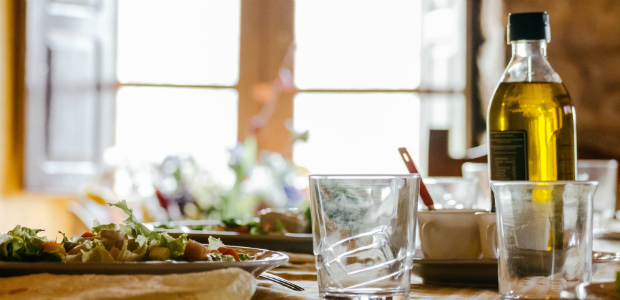At Food24, we’re huge proponents of buying local olive oil. It’s the liquid gold that takes food from average to amazing in only a few seconds. You only need to think of a fresh Caprese salad or a chunk of crusty bread to get your taste buds going. But when it comes to choosing olive oil for your kitchen, it requires a little bit more than simply throwing a pretty bottle into your trolley.
It’s been widely documented that producers of seemingly ‘high-quality’ Italian oil have been tainting it with cheaper, lower quality oil from neighbouring Mediterranean countries. This oil finds its way into our supermarkets (countless months after it’s been bottled) and, because many of us have been led to believe that imported olive oil is the holy grail, we are bamboozled into buying it.
Here are a few mistakes you might be making when you’re at the shops buying your next bottle of EVOO (extra virgin olive oil).
1. Thinking that imported oil is always better than local
Nobody checks the quality of the oil that comes into the country, which means it’s highly likely that the oil inside the bottle isn’t the oil that’s mentioned on the bottle.
2. Picking a local olive oil that isn’t accredited by the SA Olive Association
South African olive oils that have a Commitment To Compliance (CTC) sticker on the bottle have all been tested by the SA Olive Association to ensure the oil is extra virgin and free of defects. This is your seal of approval!
3. Believing that darker oils are of better quality
Good oils come in all shades and hues, from grassy green and gold to pale honey or straw. Fun fact? Official tasters actually use coloured glasses to avoid prejudicing themselves in favour of greener oils. The taste of the olive oil is what’s really telling about the quality. (Pepperiness and bitterness are indicators of good-quality extra virgin olive oils!)
4. The older the oil, the better – right? That’s actually a myth
Unlike wine, aged oils are actually seen as inferior. Why? If you think about it, olives are fruit and, like fruit juices, olive oil is perishable. The oil also contains highly volatile compounds that degenerate over time, so it’s always best to choose an oil from the current year’s harvest.
5. Being influenced by ‘best before’ dates
Though ‘best before’ or expiry dates usually allow for a two-year period, remember that expiry dates are sometimes determined only by the date of bottling, not the date or year of harvest.
For a quick run-down of olive oil jargon, keep reading!
Extra virgin olive oil is the oil from the first pressing of the olive fruit through the cold pressing process, where the olives are crushed in an environment that does not exceed a certain temperature (as heat degrades the oil). The resulting oil must have an acidity of less than 0.8% and possess a superior flavour.
Virgin olive oil is also cold-pressed, but the fruit tends to be of a lower quality, which leads to a higher acidity level (still less than 2%).
Pure olive oil/olive oil comes from the second cold-pressing of the olive fruit or from a chemical extraction of the olive mash, with a maximum acidity of 1.5%. It also may be a blend of oil obtained from a combination of pressings. It lacks superior flavour, but has a higher smoking point than virgin or extra virgin oil, making it better for deep-frying.
Refined olive oil is an oil that has been chemically treated to neutralise its acidity – tasteless, but with low acidity (less than 0.3%).
Olive-pomace oil is the last dregs of oil extracted from the leftover pulp after the first and second pressings, using solvents and heat. It’s edible but, if you’re a true foodie, you probably don’t want to be putting this in your mouth.
‘Light’ olive oil is a marketing concept and not a classification of olive oil grades. It’s completely unregulated and therefore you have no guarantee of what its content should be. The olive oil may be blended with other vegetable oils, and may not have any fewer calories than regular olive oil.
Any other descriptions on the label like “100% pure”, “first press”, or “bottled in…” are just sales terms meant to confuse or persuade you!
ALSO READ…
These 4 impressive olive oil recipes will have you stocking up on your olive oil supply!
(Image: iStock) Olive oil is a staple for every single household, whether it’s to use it for salad dressing, to lightly sauté onions or even use it for beauty purposes. But one thing we love about olive oil is its ability to bring out amazing flavors in all types of foods.

